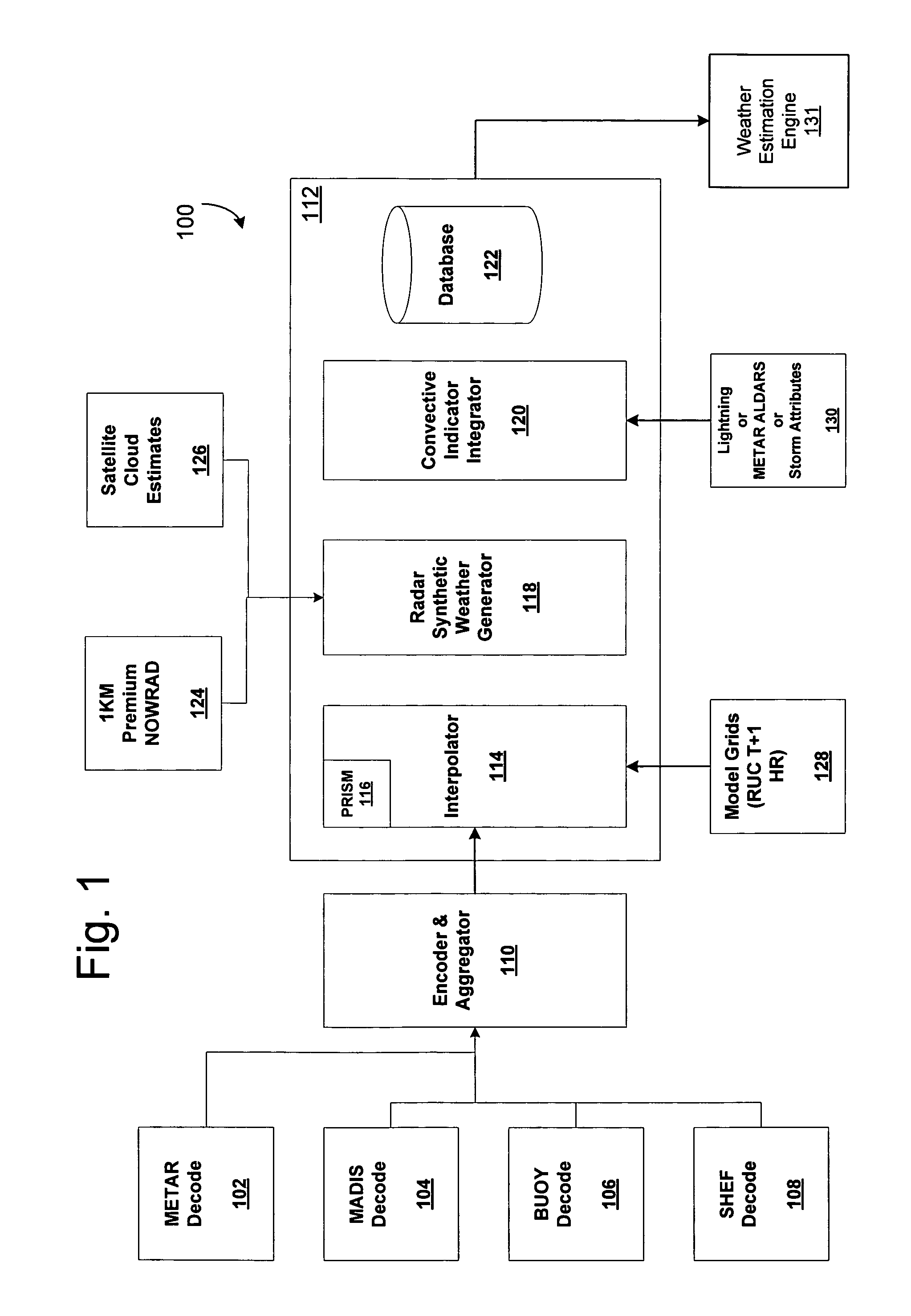System for producing high-resolution, real-time synthetic meteorological conditions for a specified location
a meteorological condition and real-time synthetic technology, applied in the field of weather data or content analysis, can solve the problems of poor resolution of sensing and measuring many weather phenomena, dangerous in respect to life and property, and large distance between reporting stations
- Summary
- Abstract
- Description
- Claims
- Application Information
AI Technical Summary
Benefits of technology
Problems solved by technology
Method used
Image
Examples
Embodiment Construction
[0019]The present invention provides systems and methods for estimating observed surface weather conditions in locations between the official reporting stations. As such, the present invention may estimate the surface weather conditions of large numbers of locations, well beyond the number of official reporting stations, by zip code, place names, GPS triangulations, etc. For example, a frequent problem encountered in the current observation network arises when a point is found to be experiencing “Light Rain,” and a nearby point is simultaneously experiencing “Light Snow.” Conventionally, there is no practical way to directly estimate the weather found between these two points. The present invention overcomes this limitation by interpolating conditions to points with unknown values that lie between the known points. The new interpolated values can be used to produce the discrete enumerated weather condition inputs for these intermediate locations.
[0020]Referring to FIG. 1, there is i...
PUM
 Login to View More
Login to View More Abstract
Description
Claims
Application Information
 Login to View More
Login to View More - R&D
- Intellectual Property
- Life Sciences
- Materials
- Tech Scout
- Unparalleled Data Quality
- Higher Quality Content
- 60% Fewer Hallucinations
Browse by: Latest US Patents, China's latest patents, Technical Efficacy Thesaurus, Application Domain, Technology Topic, Popular Technical Reports.
© 2025 PatSnap. All rights reserved.Legal|Privacy policy|Modern Slavery Act Transparency Statement|Sitemap|About US| Contact US: help@patsnap.com



